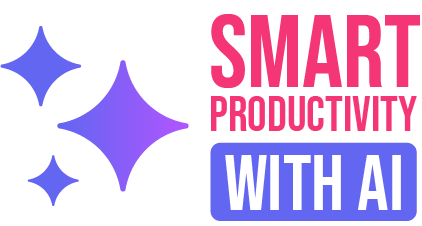Clearing Up the AI Confusion
Artificial intelligence is everywhere, yet it’s often misunderstood. From sci-fi movies to sensational headlines, AI has been painted as everything from humanity’s savior to its doom. These narratives create myths that distort how people perceive AI and its role in our lives.
In reality, AI is neither magic nor a menace. It’s a tool—a powerful one, yes—but a tool nonetheless. This article tackles some of the most common myths about AI, separates fact from fiction, and offers a clear, balanced view of what AI can (and cannot) do.
1. Myth: AI Will Take All the Jobs
One of the biggest fears surrounding AI is job displacement. It’s true that AI automates repetitive tasks, but the reality is more nuanced. History shows that technological advances often eliminate some jobs while creating new ones. For instance, the Industrial Revolution replaced many manual labor roles but gave rise to industries like manufacturing and engineering.
AI is no different. It’s changing the nature of work rather than erasing it. Tasks that are repetitive, mundane, or data-heavy are being automated, allowing humans to focus on creativity, strategy, and interpersonal roles.
The Takeaway: AI isn’t here to take over—it’s here to work alongside us, making jobs more efficient and less tedious.
2. Myth: AI Is Smarter Than Humans
The term “artificial intelligence” can be misleading. While AI excels at processing data and recognizing patterns, it doesn’t possess the nuanced understanding, creativity, or emotional intelligence of humans.
AI systems are only as smart as the data they’re trained on. They don’t “think” or “understand” in the way humans do—they follow algorithms and make predictions based on patterns. For example, an AI might recommend a song based on listening habits but wouldn’t understand why the song resonates emotionally.
The Takeaway: AI is specialized, not sentient. It’s brilliant at specific tasks but far from replicating human intelligence.
3. Myth: AI Is Only for Big Tech Companies
AI might seem like the domain of tech giants like Google or Microsoft, but that’s no longer the case. Affordable AI-powered tools have made it accessible to individuals, small businesses, and freelancers.
From automating emails with tools like Mailchimp to organizing workflows with apps like Trello, AI is becoming a part of everyday life. These tools don’t require advanced technical skills—they’re designed to be user-friendly and scalable.
The Takeaway: AI is for everyone, not just big corporations. Its accessibility is opening doors for innovation across industries and individual users alike.
4. Myth: AI Is Always Accurate
There’s a common assumption that AI is infallible, but that’s far from true. AI systems are only as good as the data they’re trained on. If that data is biased, incomplete, or outdated, the results will reflect those flaws.
Consider AI in hiring: if a system is trained on historical hiring data that’s biased against certain demographics, it will replicate and even amplify those biases. Similarly, facial recognition tools have faced criticism for inaccuracies when analyzing diverse populations.
The Takeaway: AI is powerful, but it’s not perfect. It requires oversight and thoughtful implementation to avoid errors and biases.
5. Myth: AI Will Soon Replace Human Creativity
AI is excellent at generating ideas, suggesting designs, or even composing music, but it doesn’t replace human creativity. Tools like DALL·E and Jasper AI provide starting points, but the final touch—the emotional resonance, the originality—comes from humans.
Creativity isn’t just about producing output; it’s about context, emotion, and connection. AI can enhance creativity by automating repetitive tasks or providing inspiration, but it can’t replicate the depth of human expression.
The Takeaway: AI supports creativity; it doesn’t replace it. The human touch remains irreplaceable.
6. Myth: AI Is Dangerous and Unpredictable
Movies and TV shows often portray AI as a rogue technology capable of outsmarting and overthrowing humanity. While these make for entertaining plots, they’re far from reality.
AI operates within the parameters set by humans. It doesn’t have its own motives or desires—it does what it’s programmed to do. Misuse of AI by humans is a valid concern, but the technology itself isn’t inherently dangerous.
The Takeaway: The real challenge isn’t AI going rogue—it’s ensuring ethical and responsible use by its human operators.
7. Myth: AI Works Like Human Intelligence
It’s tempting to anthropomorphize AI, but the way it “thinks” is fundamentally different from humans. AI processes data and identifies patterns at incredible speeds, but it lacks the ability to reason, empathize, or understand nuance.
For example, an AI that translates text doesn’t “understand” the language—it simply matches patterns in its training data. Similarly, AI that generates art doesn’t grasp aesthetic concepts; it predicts what combinations of pixels might look appealing.
The Takeaway: AI mimics certain aspects of human intelligence but operates in a fundamentally different way.
8. Myth: AI Will Eliminate Privacy
AI often gets a bad rap for privacy concerns, particularly with data collection and surveillance. While there are legitimate risks, they’re not inherent to AI itself—they stem from how data is handled.
Regulations like GDPR in Europe and increasing awareness around data privacy are shaping how AI tools are developed and used. Choosing tools with transparent privacy policies and secure data handling practices can mitigate risks.
The Takeaway: AI doesn’t have to compromise privacy. Ethical practices and responsible data management are key.
Separating Fact from Fiction
AI is transforming the way we live and work, but it’s often misunderstood. While it brings incredible possibilities, it’s important to separate fact from fiction. AI isn’t here to take over jobs, replace humans, or act unpredictably. Instead, it’s a tool that, when used responsibly, can enhance productivity, creativity, and innovation.
Understanding AI’s capabilities—and its limitations—is the first step to harnessing its potential. By dispelling myths, it becomes clear that AI isn’t something to fear or revere; it’s something to embrace as part of a smarter, more efficient future.



